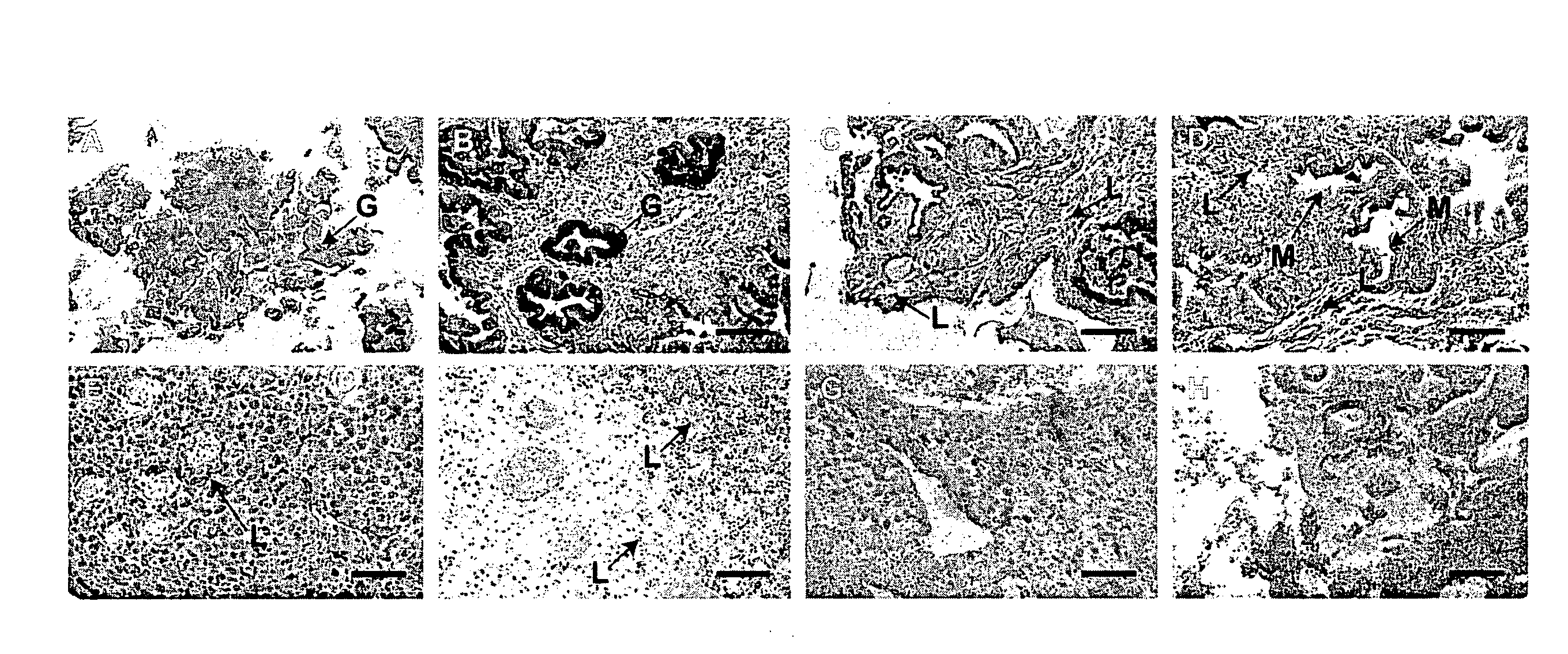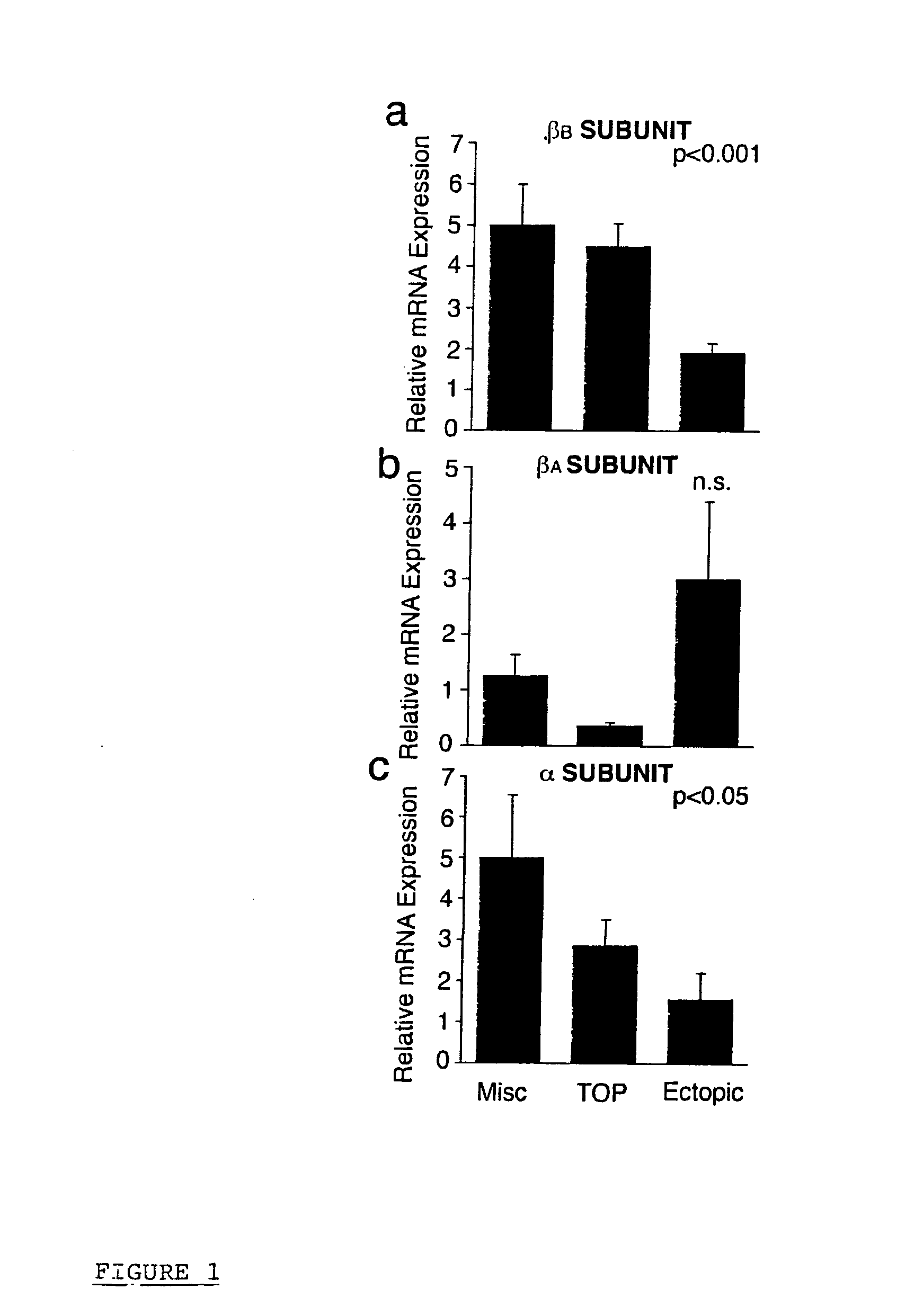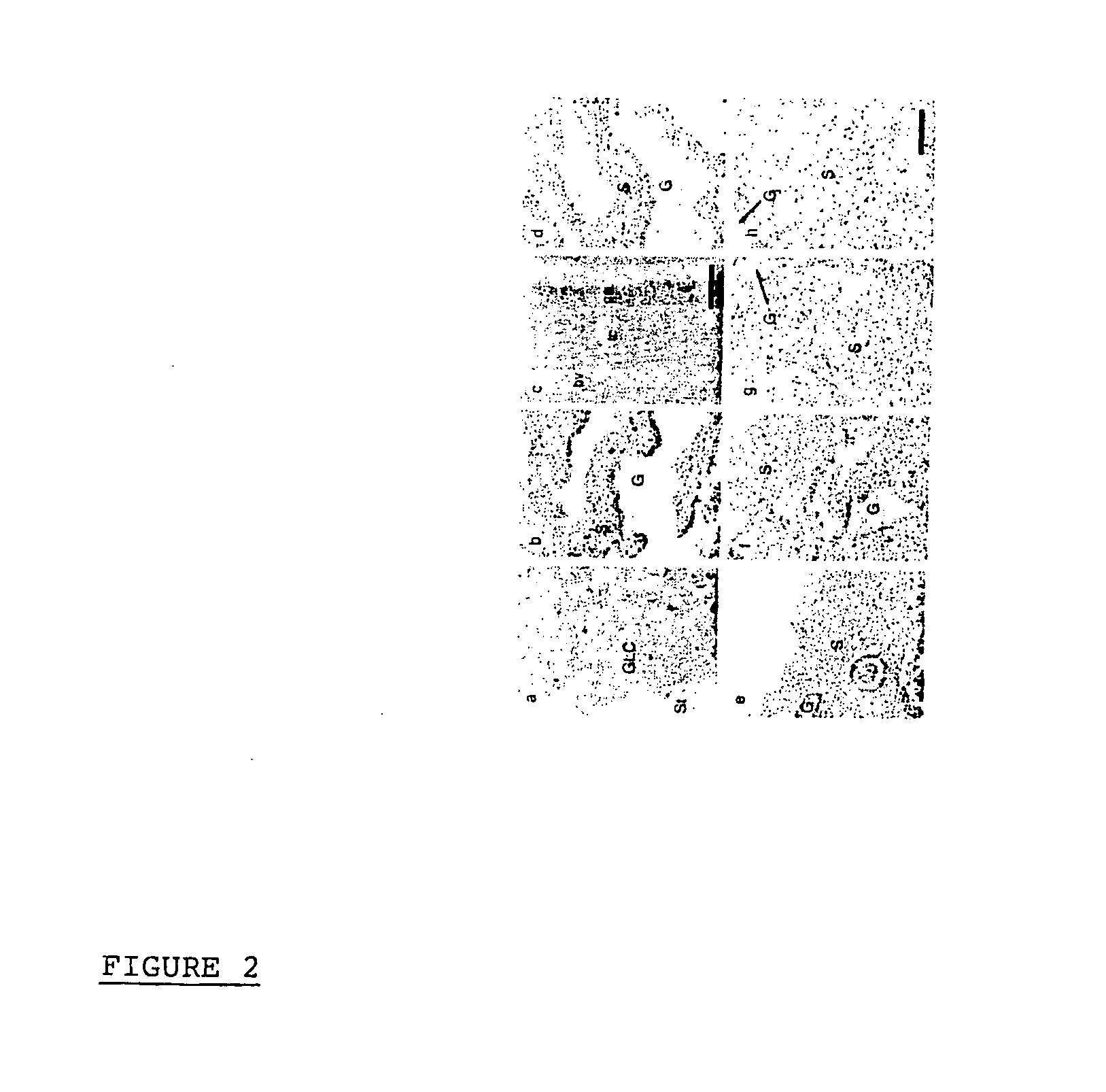Identification of ectopic pregnancies
a technology for identifying and diagnosing ectopic pregnancies, applied in the field of identifying extrauterine (or ectopic) pregnancies, can solve the problems of unnecessary laparoscopy (keyhole surgery), half of all ectopic pregnancies are either undiagnosed or misdiagnosed, and achieve reliable methods of identifying, quickly and/or accurately diagnosing and/or diagnosing an ectopic pregnancy
- Summary
- Abstract
- Description
- Claims
- Application Information
AI Technical Summary
Benefits of technology
Problems solved by technology
Method used
Image
Examples
example 1
Materials and Methods
[0107]Ethical approval for this study was obtained from Lothian Research Ethics Committee and informed written consent was obtained from all patients before sample collection. First trimester decidualized endometrium was obtained from women (age 18-45 years) undergoing surgical termination of pregnancy (TOP, n=8, group 1, mean gestation 58.7 days), surgical management of embryonic missed miscarriage (n=6, group 2, mean gestation 57.7 days) and surgical management of tubal pregnancy (n=11, group 3, mean gestation 58.1 days). None of the women undergoing surgical management of tubal ectopic pregnancy presented acutely with hemodynamic shock, and all required serial serum beta-HCG and ultrasound monitoring prior to diagnosis. The decidualized endometrium and trophoblast were obtained by suction curettage from groups 1 and 2. The decidualized endometrium was obtained by suction endometrial biopsy (Pipelle™, Eurosurgical Ltd, Cranleigh, UK) from grou...
example 2
Materials and Methods
[0164]Ethical approval for this study was obtained from Lothian Research Ethics Committee (04 / S1103 / 20). Written and informed consent was obtained from all patients before sample collection. Uterine decidua was obtained from obtained from women (age 18-45 years) undergoing surgical termination of pregnancy (STOP, n=8, group 1), surgical management of miscarriage (n=6, group 2) and surgical management of tubal pregnancy (n=11, group 3). The decidua and trophoblast were obtained by suction curettage from groups 1 and 2. The decidua was obtained by Pipelle™ endometrial biopsy from group 3. The decidua was isolated from the trophoblast macroscopically. Decidual biopsies were immersed in RNAlater™ (Ambion, Texas, USA) at 4° C. overnight then flash frozen at −70° C. Total RNA was extracted from the decidual biopsies as detailed in the manufacturers' protocol (Qiagen, West Sussex, UK).
RNA QC
[0165]Total RNA was quality confirmed on RNA 6000 Nanochips in the Agilent 2100...
example 3
[0187]During inflammation a number of mediators and effectors of immunity are recruited to aid resolution and an over exuberant, or prolonged, response can result in tissue damage. Amongst the mediators responsible for such tissue damage are proteases, which function as part of the innate immune response. (Dallegri and Ottonello 1997). The host response also includes the production of a number of important anti-proteases, such as the anti-microbials, secretory leucocyte protease inhibitor (SLPI) and elafin, in order to counteract the actions of proteases and therefore prevent resultant damage to host tissues (Sallenave et al, 1994; Sallenave 2000; Schalkwijk et al, 1999). SLPI inhibits a number of proteases, including neutrophil elastase, trypsin and cathepsin G, whilst elafin appears to be restricted to regulating neutrophil elastase and proteinase 3 (Thompson and Ohlsson, 1986, Wiedow et al, 1991, Sallenave and Ryle 1991).
[0188]SLPI and elafin and are expressed throughout the fema...
PUM
| Property | Measurement | Unit |
|---|---|---|
| Fraction | aaaaa | aaaaa |
| Fraction | aaaaa | aaaaa |
| Fraction | aaaaa | aaaaa |
Abstract
Description
Claims
Application Information
 Login to View More
Login to View More - R&D
- Intellectual Property
- Life Sciences
- Materials
- Tech Scout
- Unparalleled Data Quality
- Higher Quality Content
- 60% Fewer Hallucinations
Browse by: Latest US Patents, China's latest patents, Technical Efficacy Thesaurus, Application Domain, Technology Topic, Popular Technical Reports.
© 2025 PatSnap. All rights reserved.Legal|Privacy policy|Modern Slavery Act Transparency Statement|Sitemap|About US| Contact US: help@patsnap.com



